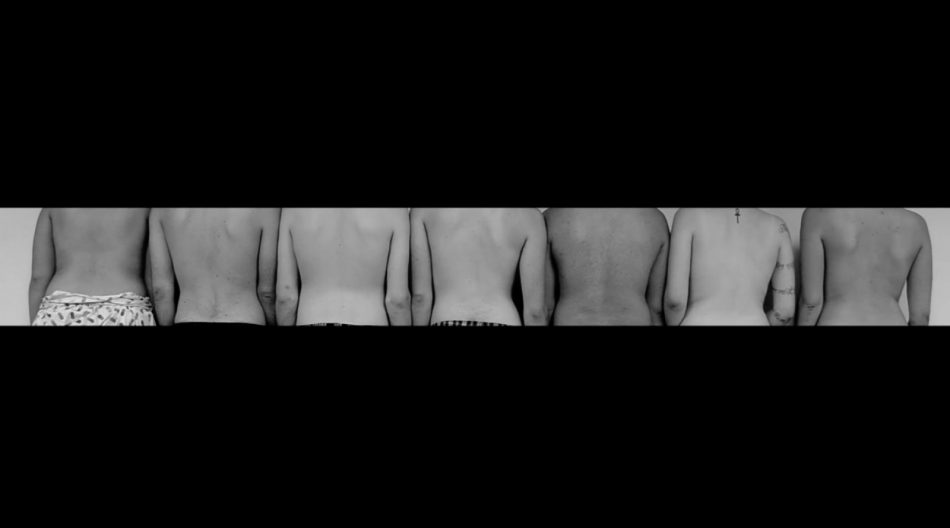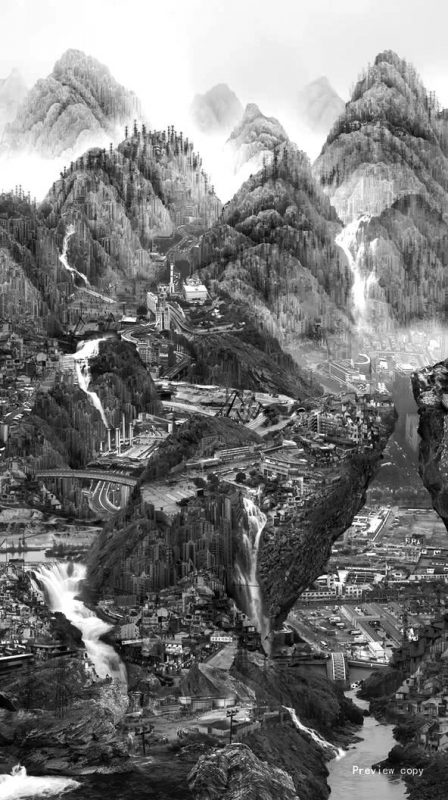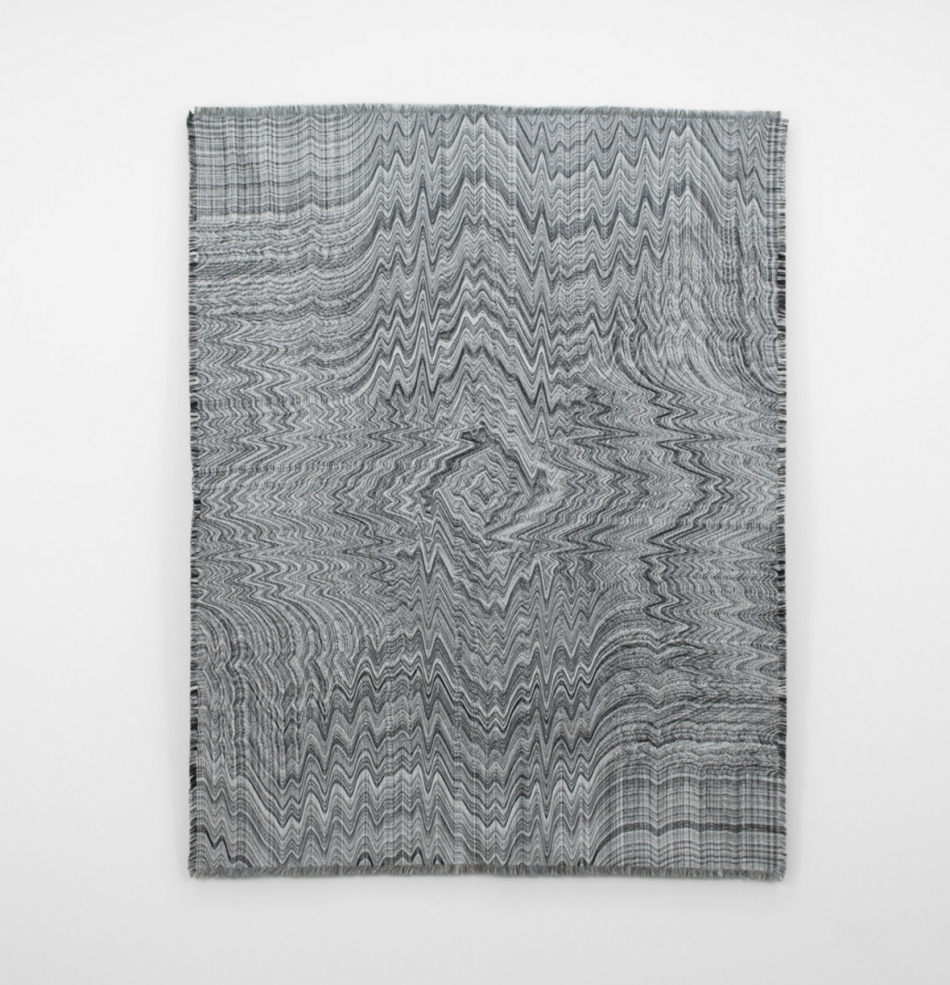
Disposa (2012) by Mitchell Gustin
Currents New Media Festival in Review
Currents New Media Festival this year augmented what new media artist Julia Scher has called “appearances in screens” with Virtual Reality and Augmented Reality experiences. Nested into the main event at El Museo Cultural was Code and Noise, an independent exhibition that seemed especially well-suited for visitors interested in how appearances in screens may metamorphose into a next situation.
I paid three visits to Currents 2016 and consistently found Code and Noise, curated by Christine Duval and sponsored by the Thoma Foundation, to be of interest. So much so, in fact, that it led me later on (at my office/studio) to watch a panel discussion on Julia Scher’s Predictive Engineering, in its third iteration (since 1993) at the new San Francisco Museum of Modern Art.
The Predictive Engineering panel, held at the Tate Media in Transition conference in London last November, featured Scher and SFMOMA curators. They discussed how SFMOMA has committed to Scher’s time-based media, a changing media contemplation on the relationship of bodies and buildings, over 20 years. The obligations on the institution coincide with the artist finely re-tuning, over iterations or exponents of Predictive Engineering, precisely how the work deals in real-time and past-time relationships including its own archive of previous appearances.
The Tate panel constellated questions that apply to new media in general: What does it mean for new media to “preserve” time? What does it mean to iterate?
Judging by Currents festival, it appears to mean more and more the license of the user to determine the parameters of the experience based in a confluence of screens and viewing possibilities.
Standing at the edge of Reilly Donovan’s Brain Xels, an augmented reality work, I was approached by a young festival volunteer with iPad whose handoff of the device let me see holographic portraits of people emerge on the pixelated carpet — a space that I could both see and stand on without aid of iPad. What I’m calling a carpet is described in artist materials as a “protective laminate vinyl adhesive sticker that is adhered to a floor for viewers to safely walk upon.”
It is, unsurprisingly, an information-ful surface as well.
Asking me to sit down on a chair and don headphones was Disposa, a 2012 video work made by Mitchell Gustin at San Clemente. A horizontal image appears in a black rectangular expanse. Seven people, nude from the waist up, stand next to one another, their backs to the camera. They begin swaying ever so slightly. The shadows between their armpits and their wrists lead you to start free-associating their body parts. Arms like elephant trunks, outlines of breasts inclining toward the neighbor.
Finally, maybe six or seven minutes in, each of seven torsos turns individually around to face the camera. The four men and three women stoop down, one by one, to select something off of the ground. The brief exposure of their faces and bodies is like a memory of humanity. Their hands hold up the object they’ve selected: a chain, a one-dollar bill, a photograph. They let go of their objects, shake their hands out, and turn their backs again.
Entering into Code and Noise, squint tapestry, a wall textile by Laura Splan undulates with a pattern suggestive of lines made by Rapidograph. The computerized woven jacquard is actually formed of electromyography data captured as the artist squints or blinks. The signal turns the work into something both cardiac and orchestral. I also especially loved what JD Beltran is doing with unfixing the “appearance in screens” aspect of new media, by making the screen a mutable space. Frame abuts edge abuts motion and empowers a real-time dual perception of time frozen and time advancing.
In the several small screens devoted to animation loops, I enjoyed Viktoria Karmins Extraterrestre (Mexico 2015), a Boschian underworld of proliferating plants and morphing rodents and insects. The visual interest lies also in her sense of image-making as invention meeting historical document.
Karmin’s work made me flash on a talk I caught at Santa Fe Art Institute, called Creation Myths of Mesoamerica: Popol Vuh and Quetzalcoatl. Pre-Columbian scholar and art historian Khristaan Villela interviewed illustratator Luis Garay of Granada, Nicaragua, on Garay’s eight childrens’ books including one on immigration, The Long Road. The fascinating discussion dealt with transactions in time. Villela shared his observations about the ways that contemporary time is constantly reconstructing ideas and inventions about the appearances of the past.
The New Millennium Workout Routine takes its title from a mandatory series of exercises the South Korean government prescribed the people in 1999 to ensure the nation’s future physical health. Artist Yaloopop videotaped herself performing the exercises in red long underwear. The work becomes both a nationalistic ritual and a meditation on a faceless condition. Yaloopop’s black hair and red costume proliferate.
The show included also many leading New Mexico artists of video, including Debris of Susanna Carlisle and Bruce Hamilton, and Orlando Leibovitz’s Vignettes, that asked a visitor to peer close for the intimacy of nudes walking into and out of the frame. A man coming in and out, walking a dog. Another nude juggling black balls. Still a third, a famous video artist himself, facing the camera holding a camera. Adn a woman who appears her back to us, wearing a garment she sheds to reveal both breasts gone.
Currents 2016 had an emotional feeling to itself this year, a sense in which both pre-stored recordings of visitor heartbeats and South Korean calisthenics could coexist with a visitor’s need to be as peripatetic and restless as new media are.

Yong Yingliang, Rising Mist from Code and Noise at Currents New Media Festival



